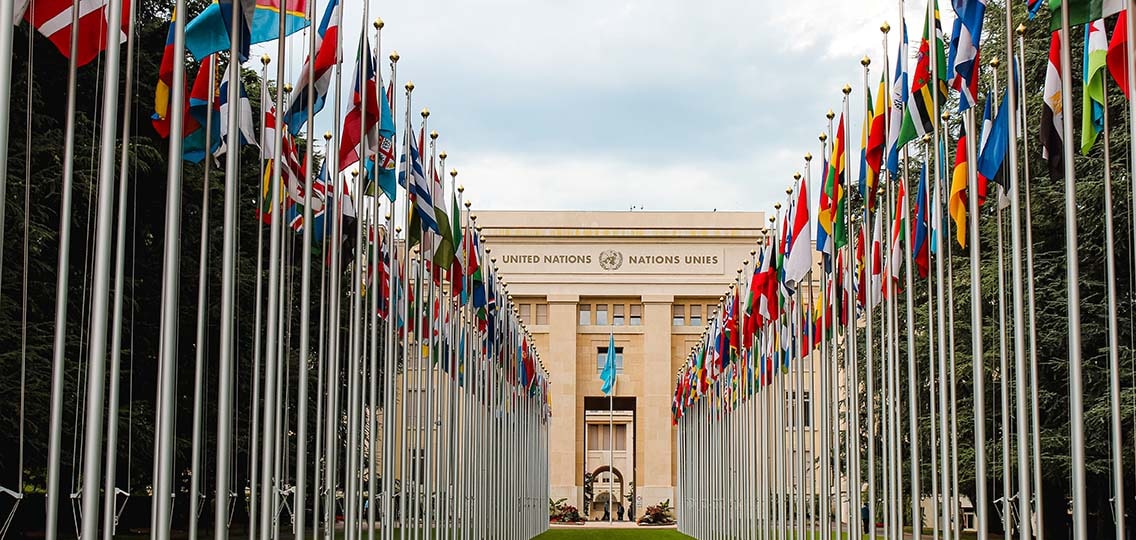The climate crisis is changing our lives and the world around us. Its devastating effects such as flooding, wildfires, heatwaves and droughts are harming Canadians – and people around the world.
While the cause and danger of climate change has been known for decades, governments around the world began to take notice in the 1980s. Since then, countries have talked and debated about how the international community should collectively respond and face down the challenges posed by a shifting climate.
And all the while, the climate emergency has got worse and today, in 2021, the window for change is narrower than ever. With countries preparing to meet next week in Glasgow for the 26th “Conference of the Parties” or “COP 26”) — this post offers you a short history of the international community’s response to climate change.
Despite having worked in climate law for over ten years, this will be my first time attending one of these conferences. I’m looking forward to seeing one from the inside for the first time and connecting with lawyers, activists, and leaders from around the world. But I’m also deeply worried that the conference could end in discord and delay – and on my home country’s watch. I’ll keep you informed of what I see and hear and try to make sense of it all.
The IPCC
The Intergovernmental Panel on Climate Change (IPCC) was founded in 1988 by the United Nations Environmental Programme and the World Meteorological Organization as an independent body to investigate the impact of climate change and propose solutions to avoid a climate disaster.
The IPCC assesses what the science has to say about the impact of climate change, its impacts and society’s options for responding to it.
Every five years, the IPPC releases an assessment report highlighting the ever-growing danger of the climate crisis if governments around the world fail to act. With each passing report, its alarm has grown louder.
In August 2021, it released its sixth assessment on climate change and the results are truly frightening. The report warned that we are closer than ever to irreversible climate tipping points that will accelerate and amplify harm to people and the natural world. The IPCC clearly states that governments must take immediate action to dramatically reduce greenhouse gas emissions over the next decade and achieve net-zero by 2050.
International climate agreements
The global community has sought to negotiate international agreements to chart a path away from the climate emergency. These efforts have met varying degrees of success and failure.
Generally, international agreements and treaties are used to encourage collective action to address global problems. They come in different forms, from purely aspirational to legally binding with punitive consequences for those who fail to comply.
So far, international climate agreements have fallen between these two categories, introducing some obligations on parties to them to report emissions, but without legal options to enforce the reduction of fossil fuel development and consumption. Climate treaties also fail to address the export of fossil fuel that allow countries – such as Canada – to avoid scrutiny for exported emissions.
Below is an overview of major international climate agreements Canada has been a party to so far.
The Montreal Protocol, 1987
While not a climate agreement, the Montreal Protocol was an international treaty that provided a successful framework for global environmental action. Throughout the 1980s, there was significant concern around the world about the impact that chlorofluorocarbons (CFCs) and other chemicals were having on the world ozone layer. In 1987, the Montreal Protocol became the first international agreement to aim at removing these chemicals from the Earth’s atmosphere.
The agreement is notable because it has succeeded in eliminating nearly 99 per cent of these ozone depleting substances. It is also worth noting that only 14 years elapsed between the discovery of the impacts of CFC gasses and the signing of this international accord.
However, the Montreal Protocol only tackled CFC gasses, with only a handful of producers and used in a limited number of applications. Tackling the impact of greenhouse gasses will require a much greater level of international cooperation.
The UN Framework Convention on Climate Change, 1992
In 1992 a landmark intergovernmental treaty was signed to address the problem of climate change – the UN Framework Convention on Climate Change.
192 countries signed this agreement, which charted a path for international discussion on how to tackle climate change and created the means for governments to work together to find solutions. An important feature of this agreement was the creation of the Conference of Parties (COP), an annual meeting of global leaders to discuss progress on tackling climate change.
Kyoto Protocol, 2005
The Kyoto Protocol was adopted in 1997, and entered into force in 2005, becoming the first legally binding climate treaty.
The protocol mandated that 37 industrialized nations, including Canada and the European Community, cut their greenhouse gas emissions. Developing countries, including China and India, were exempt from emission targets under the principle of “common but differentiated responsibilities.”.
Ultimately, key major industrialized nations failed to adopt or comply with the protocol. The United States failed to ratify the agreement. In 2011, Canada — under the leadership of then-Prime Minster Stephen Harper — also pulled out of the Protocol.
Paris Agreement, 2015
The Paris Agreement, signed in 2015, is the most significant international climate agreement to date.
In it, governments around the world commit to holding global warming to “well below” 2 degrees Celsius, and, crucially, pursuing efforts to keep it to 1.5 degrees. The agreement also aimed to pursue a goal of net-zero emissions by the second half of the 21st century.
This agreement adopted a significantly different approach to the Kyoto Protocol. Instead of emission targets imposed from above and restricted to developed countries, the Paris Agreement required each signatory to set their own target and their plans to achieve it – a Nationally Determined Contribution (NDC).
Canada’s response to international climate agreements
Despite signing on to international climate agreements, Canada has failed to meet a single emissions target so far. Leaders from across the political spectrum have repeatedly committed to tackling climate change, but Canada has kept on missing its emissions targets.
We now have the opportunity to break that trend.
In June 2021, Parliament passed the Canadian Net-Zero Emissions Accountability Act. While not as strong as some international comparators, this law improves transparency and consistency around climate action and will allow Canadians to hold the federal government to account for meeting emissions reduction targets.
This law will also bring Canada’s latest Nationally Determined Contribution (NDC) under the Paris Agreement into Canadian law. Crucially, this will arm parliamentarians, experts, and the public with the tools they need to be able to scrutinize Government progress.
Ecojustice played a crucial role in pushing the federal government to table, strengthen and pass this new climate law for Canada.
Our team is hopeful that the passage of the Canadian Net-Zero Emissions Accountability Act will be a turning point for Canada’s checkered legacy international climate agreements. Doing so will require political leadership and the courage to implement bold and enforceable policies to reduce emissions and achieve net-zero by 2050.
We are committed to holding the federal government accountable to take bold, enforceable, and ambitious steps to reduce emissions and make sure we never miss another climate target.
I’ll be attending COP 26 in Glasgow next month and will be eagerly watching for Canada and other countries to ramp up their climate commitments and take ambitious action to fight the climate crisis.



